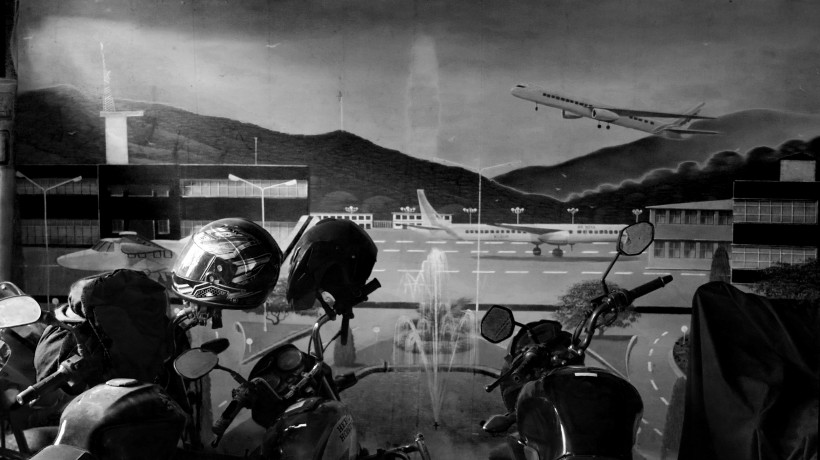Paolo Silvio Harald Favéro
Paolo Silvio Harald Favéro is a visual anthropologist presently Associate Professor in Film Studies and Visual Culture at the Department of Communication Studies, University of Antwerp. A member of at the Visual and Digital Cultures Research Center (ViDi) he is also the Chair of the MA is Film Studies and Visual Culture. Paolo has devoted the core of his recent career to the study of visual culture in India (and partly also Italy). Ethnographically involved today in research on emerging image-making practices and politics in contemporary India, he was recently awarded funding by the Flemish government for a project on the introduction of digital technologies in Cuba. He has a number of publications on the meaning of images in contemporary digitized habitats of the world but also more broadly on the meaning of images in human life across space and time. Paolo is the author of The Present Image: Visible Stories in a Digital Habitat (Palgrave Macmillan, 2018) and of Dentro ed Oltre l’Immagine: saggi sulla cultura politica e visive nell’Italia contemporanea (Meltemi, 2017). He is presently working on a new book entitled Image-Making-India (Bloomsbury).
Studios seem to be transformative places where people could act out new forms of identity in advance of society.
Summary
Bio
PDF
Close
The conversation between the two researches revolves around the central question of backdrop, its meaning, position inside the studio practices. It delves into the performative aspect of backdrop photography putting it in proximity with theatre and cinema, question its nature as a prop in the process of staging an image. The question seem to be how can photography as a general practice can be understood and its theoretical notions enriched through research into rich backdrop practices (in case of Pinney and Fevero mostly in India and surrounding region) and how can we explain those practice via the established theoretical cannons. The conversation negotiates through main notions of authors such as Michael Fried, John Tagg, illuminates on usually neglected nuances of Barthes Camera Lucida to finally elaborate the profilmic nature of backdrop photography and its representative role of the society in which it functions. What kind of politics of space does it represent; is it transformative or representative? What is the meaning of the notion of the prophetic nature of photography?
- Keywords: backdrop photography, photographic event, politics of space, profilmic, prophetic nature of photography
Paolo Silvio Harald Favéro is a visual anthropologist presently Associate Professor in Film Studies and Visual Culture at the Department of Communication Studies, University of Antwerp. A member of at the Visual and Digital Cultures Research Center (ViDi) he is also the Chair of the MA is Film Studies and Visual Culture. Paolo has devoted the core of his recent career to the study of visual culture in India (and partly also Italy). Ethnographically involved today in research on emerging image-making practices and politics in contemporary India, he was recently awarded funding by the Flemish government for a project on the introduction of digital technologies in Cuba. He has a number of publications on the meaning of images in contemporary digitized habitats of the world but also more broadly on the meaning of images in human life across space and time. Paolo is the author of The Present Image: Visible Stories in a Digital Habitat (Palgrave Macmillan, 2018) and of Dentro ed Oltre l’Immagine: saggi sulla cultura politica e visive nell’Italia contemporanea (Meltemi, 2017). He is presently working on a new book entitled Image-Making-India (Bloomsbury).
Christopher Pinney is Professor of Anthropology and Visual Culture at University College London. His chief interests are in commercial print culture and photography in South Asia and popular Hinduism in central India. He is currently leading the European Research Council funded project “Photodemos/Citizens of Photography.” His publications combine contemporary ethnography with the historical archaeology of particular media (see eg. Camera Indica and Photos of the Gods). The Coming of Photography in India, based on the Panizzi Lectures, was published by the British Library in October 2008. Other recent work includes Photography and Anthropology (Reaktion, 2011) and (together with Suresh Punjabi) Artisan Camera: Studio Photography from Central India (Tara, 2013).
PDF format files of individual interviews are priced at 6.00EUR. If you are subscribed to Membrana Online, you may purchase PDF access to all content on our site: Membrana PDF
(Online subscription is required!)
BUY PDF: Paolo S.H. Favero & C. Pinney: Backdrops – PDF
DOWNLOAD PDF:
